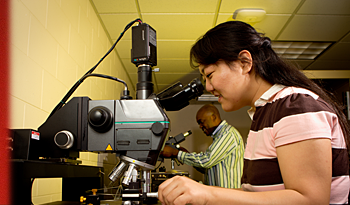About Us
The group, under the guidance of Prof. Tom Weller has graduated 45 Masters and 12 PhD students during the period from 1997 - 2013, all successfully employed at leading RF companies and universities. We also encourage undergraduate student participation by involving them in the Research Experience for Undergraduates (REU) program and senior design projects.
The main focus is in the areas of design, fabrication, measurement and modeling of RF/microwave/mm-wave circuits and systems, with a current emphasis on additive manufacturing, advanced antenna technologies, microwave materials and electromagnetic sensors.
Current Students
POST-DOCTORAL RESEARCH ASSOCIATES
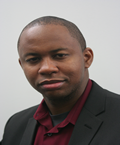 Dr. Anderson D. Prewitt earned his Bachelor of Science in Electrical Engineering from the Florida A&M University/Florida State University College of Engineering, and a Master of Science in Electrical Engineering from the University of Central Florida, where his specialization was Electromagnetics. He also has a Master of Science in Materials Engineering and a PhD in Materials Science from the University of Florida where his dissertation work focused on the Electronic Properties of Energy Converting Materials.
Dr. Anderson D. Prewitt earned his Bachelor of Science in Electrical Engineering from the Florida A&M University/Florida State University College of Engineering, and a Master of Science in Electrical Engineering from the University of Central Florida, where his specialization was Electromagnetics. He also has a Master of Science in Materials Engineering and a PhD in Materials Science from the University of Florida where his dissertation work focused on the Electronic Properties of Energy Converting Materials.
Professionally, Anderson has worked on projects and conducted research related to various topics including Renewable Energy, Electromechanical Thin Films, Sensor Systems, and Applied Computational Data Analysis. In addition to his research, Dr. Prewitt has years of experience working with projects and programs related to Science, Technology, Engineering, & Math (S.T.E.M.) Education and he is also the founder of Prewitt Solutions LLC.
Anderson is currently working as a Post-Doctoral Scholar with the WAMI group at the University of South Florida. His work is related to advanced additive manufacturing techniques to produce wireless devices with the intent of advancing the current state of the art in 3D printing by using novel materials, methods, and modeling techniques.
Graduate Students
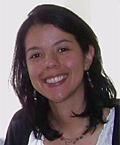 María Fernanda is pursuing a Ph.D. degree in Electrical Engineering. In 2009, she received her M.Sc. in Electrical Engineering from University of Puerto Rico at Mayagüez, Puerto Rico. Her M.Sc. research concerned the design and characterization of a cavity-backed folded-slot antenna. In 2005, she graduated from Universidad del Cauca, Colombia, with a B.Sc. in Engineering Physics. Her undergraduate research was in the fabrication and characterization of Vanadium Dioxide (VO2) thin films.
María Fernanda is pursuing a Ph.D. degree in Electrical Engineering. In 2009, she received her M.Sc. in Electrical Engineering from University of Puerto Rico at Mayagüez, Puerto Rico. Her M.Sc. research concerned the design and characterization of a cavity-backed folded-slot antenna. In 2005, she graduated from Universidad del Cauca, Colombia, with a B.Sc. in Engineering Physics. Her undergraduate research was in the fabrication and characterization of Vanadium Dioxide (VO2) thin films.
Her doctoral research project is focused on materials (bulk, thin films, multilayers and liquids) and device characterization through evanescent microwave microscopy. Microwave microscopy is a non-destructive tool used to measure the electromagnetic properties of materials with sub-wavelength resolution. María has been working in the design and testing of a dielectric resonator-based microwave probe, which has been successfully employed in the characterization of insulating bulk samples and low-loss and lossy liquids. The spatial resolution of the probe, operating at 5.7GHz with a tip-radius of 25?m, is 10µm and was experimentally verified by scanning a MMIC phase shifter.
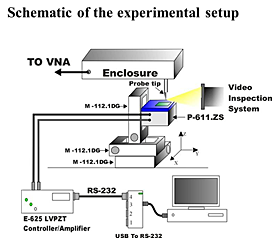
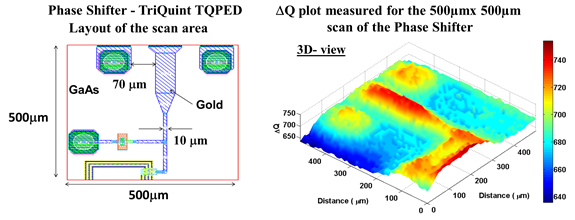
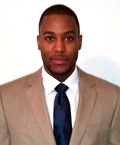
Michael Grady is pursuing his Ph.D. in Electrical Engineering. He earned both his B.S. (2008) and M.S. (2010) in Electrical Engineering from Auburn University in Auburn, AL. Michael has been awarded the NSF Alabama LSAMP Bridge to Doctorate Fellowship, two NSF Graduate Research Diversity Supplement (GRDS) awards, Florida Education Fund's McKnight Doctoral Fellowship, an Alfred P. Sloan Graduate Scholarship, and he is a past recipient of the GEM PhD fellowship award with research experience at Corning, Inc. In 2012, he was awarded the IMS2012 PhD Student Sponsorship. Michael also serves as an REU graduate-mentor.
His research goal is to improve the fidelity and sensitivity of radiometric measurements for biomedical applications by acquiring a thorough understanding of microwave noise characterization, device modeling, microwave integrated circuit design and numerical electromagnetic modeling. To date, Michael has designed MMIC-FET hot and cold noises sources, and he has done work to allow the monitoring of subsurface temperatures of pressure ulcers.
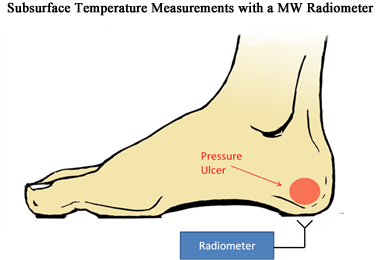
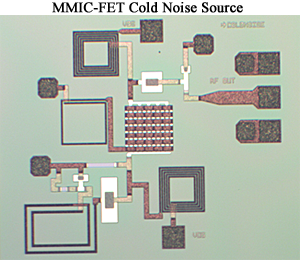
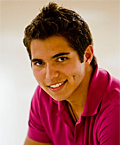
Timothy Joseph Palomo Delgado is a Ph.D. student, from Venezuela, in Electrical Engineering, specifically in RF and Microwave system. Timothy graduate as the outstanding student of the electrical engineering class in 2011 from the University of South Florida. He also won the first place in the Senior Design project competition by designing a system that measures RPM (revolutions per minute) of an object rotating in 2D. As an undergraduate student he participated in a research project focused on the design and fabrication of miniature wideband stopband filters in the X-band region using tightly coupled and electrically small resonators. This helped him improving his ability not only in design and understanding RF and microwave, but also in many fabrication processes like photolithography, metal deposition, wire bonds, and others.
His current research as a Ph.D. student is focused on the design and fabrication of Bandpass Tunable Filters in the X-Band region using ferroelectric materials and/or MEMS. Highly tunable (an octave) filters are physically big and hard to fabricate, making the realization of a miniature tunable bandpass filter in the X-Band region an important area of research. In his research the use of ferroelectric materials, such as BST (Barium Strontium Titanate), for high tunable range will be investigated.
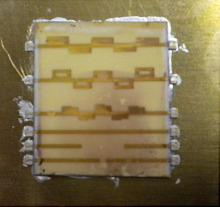
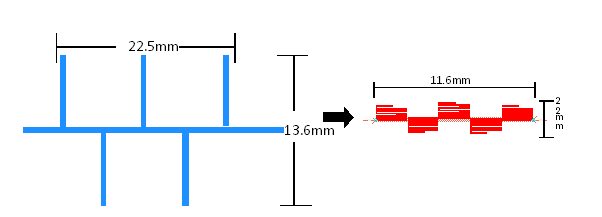
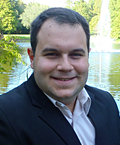
Eduardo A. Rojas Nastrucci earned his Bachelor degree in Electrical Engineering from the "Universidad de Carabobo" Valencia, Venezuela, in 2009. Under his undergrad studies had been several times awarded with the "Best Department Students Award", and the "Best University Students Award". He was recipient of the "Roberto Rocca Program" from the Techint group.
As a student he worked as teaching assistant of Physics, and of Electromagnetics. As professional he worked in 2010 as professor of the department of Electrical Engineering, in the area of Electronics and Communications. In 2011 worked as assistant professor in the department of Telecommunications Engineering, in the area of Electromagnetics and Radiation. All this in the "Universidad de Carabobo". Also worked in design of Electrical Systems for the Venezuelan Industry.
Eduardo is currently pursuing his PhD degree with the WAMI group in the University of South Florida. His work is oriented in investigation of multiple approaches to filter design and fabrication, with the intent of advancing the current state of the art for miniaturized millimeter wave band-pass filter design.
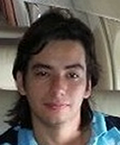 Ramiro A Ramirez H received in 2009 his B.S degree in Electrical Engineering from ‘Universidad de Carabobo’, Valencia, Venezuela; obtaining in several opportunities the university recognition for his outstanding academic performance.
Ramiro A Ramirez H received in 2009 his B.S degree in Electrical Engineering from ‘Universidad de Carabobo’, Valencia, Venezuela; obtaining in several opportunities the university recognition for his outstanding academic performance.
He worked in Venezuela as a project engineer, in the design and development of residential, commercial and industrial electrical systems; especially on power distribution lines, process automation, grounding systems and lighting designs. Since 2013 is a PhD student at the University of South Florida’s Electrical Engineering department, joining the WAMI group. His current work is focused on antennas design for RFID (Radio Frequency IDentification) applications.
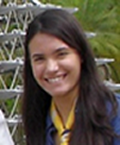 Denise Lugo-Muñoz, was born in Venezuela in 1987. She received the Professional Electronics Engineer degree in 2009 and the Magister of Electronics Engineering degree, with a major in Solid State Electronics, in 2011, both from Simón Bolívar University, Caracas, Venezuela. She is currently pursuing her Doctor of Engineering degree at University of South Florida.
Denise Lugo-Muñoz, was born in Venezuela in 1987. She received the Professional Electronics Engineer degree in 2009 and the Magister of Electronics Engineering degree, with a major in Solid State Electronics, in 2011, both from Simón Bolívar University, Caracas, Venezuela. She is currently pursuing her Doctor of Engineering degree at University of South Florida.
From 2009-2013, she worked as a Research Assistant at USB’s Solid State Electronics Laboratory, where she carried out research activities in the areas of physics based modeling, simulation and parameter extraction of MOSFETs, PIN diodes and Solar Cells. She graduated “Cum Laude” from her undergraduate engineering studies, her Master’s thesis was awarded a mention of “Outstanding,” and her Master’s degree was conferred “With Honors.”
In fall 2013, she joined the WAMI Research Center at USF. Her current work is focused on the design of millimeter-wave 3D printed dielectric waveguides for sensing applications.
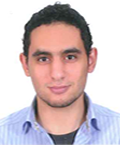 Mohamed Mounir Abdin joined the Electrical Engineering Ph.D program in 2013. In 2010, he earned his B.Sc. in EE from Arab Academy for Science and Technology (AAST), Cairo, Egypt. Before joining the WAMI Research Center, Mohamed worked for 3 years as a Process Engineer at a leading MEMS Foundry called Innovative Micro Technology (IMT), Santa Barbara, CA. Currently he is exploring the possibilities of designing RF/MW Systems using 3D technology.
Mohamed Mounir Abdin joined the Electrical Engineering Ph.D program in 2013. In 2010, he earned his B.Sc. in EE from Arab Academy for Science and Technology (AAST), Cairo, Egypt. Before joining the WAMI Research Center, Mohamed worked for 3 years as a Process Engineer at a leading MEMS Foundry called Innovative Micro Technology (IMT), Santa Barbara, CA. Currently he is exploring the possibilities of designing RF/MW Systems using 3D technology.
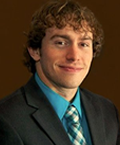 Jonathan M. O’Brien is a Florida native that earned his undergraduate degree in Electrical Engineering from the University of South Florida in 2012. During his undergraduate study he gained experience in the field by designing test systems for the Orion Shuttle project. After completion of his bachelors he began to pursue a graduate degree with a concentration on RF and antenna design under the guidance of Dr. Tom Weller.
Jonathan M. O’Brien is a Florida native that earned his undergraduate degree in Electrical Engineering from the University of South Florida in 2012. During his undergraduate study he gained experience in the field by designing test systems for the Orion Shuttle project. After completion of his bachelors he began to pursue a graduate degree with a concentration on RF and antenna design under the guidance of Dr. Tom Weller.
His research encompasses the emerging technology of 3D printing and its role in the RF field. The goal of his research is to investigate efficient ways to design full 3D RF structures that can reduce footprint size while maintaining high performance. This work led to a fellowship with Draper Labs in 2013. To date his research with Draper Labs has developed a new miniaturization technique which yielded an ultra-wideband spiral antenna with a 40% smaller volume while improving or maintaining performance compared to a traditional spiral antenna. He hopes to apply this technique to other antenna structures to achieve smaller, more compact designs than previously achievable.
 John Stratton received his Bachelor of Science in Electrical Engineering in May 2014, graduating with high honors. He is now pursuing a MSEE, with a focus on RF/Microwave Engineering, under the guidance of Dr. Thomas Weller. His Master’s Thesis is in collaboration with Sciperio Inc., and is related to the direct printing of 3D structures with embedded RF circuits. John spent a Summer working at Sciperio, learning how to print 3D electronic structures.
John Stratton received his Bachelor of Science in Electrical Engineering in May 2014, graduating with high honors. He is now pursuing a MSEE, with a focus on RF/Microwave Engineering, under the guidance of Dr. Thomas Weller. His Master’s Thesis is in collaboration with Sciperio Inc., and is related to the direct printing of 3D structures with embedded RF circuits. John spent a Summer working at Sciperio, learning how to print 3D electronic structures.
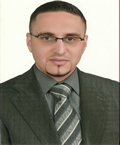 Derar Hawatmeh received his B.Sc. in Communications and Electronics Engineering from Jordan University of Science and Technology (JUST), Irbid, Jordan in 2010. In the same year, he joined the Master program in the Electrical Engineering Department at JUST majoring in Wireless Communications.
Derar Hawatmeh received his B.Sc. in Communications and Electronics Engineering from Jordan University of Science and Technology (JUST), Irbid, Jordan in 2010. In the same year, he joined the Master program in the Electrical Engineering Department at JUST majoring in Wireless Communications.
From March 2012 to September 2013, he worked as a researcher in the the R&D department in Waseela - Integrated Telecommunication Solutions. After that, he joined the Network and Communications Engineering department as an instructor in Al Ain University of Science and Technology from September 2013 to July 2014. In August 2014, He joined the Center for Wireless and Microwave Information Systems (WAMI) in university of south Florida as a graduate research assistant .
His research interests include the analysis and design of RTLS systems, and the analysis & design of planar antennas, 3D antennas
compact, planar, passive, multi-frequency and ultra-wideband microwave components for wireless applications.
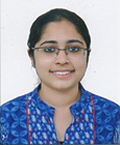 Arya Menon completed her Bachelor of Engineering in Electronics and Communication from Manipal Institute of Technology, Manipal University, India, in 2014. During the course of her undergraduate studies, she interned at Center for Electromagnetics (CEM), Council for Scientific and Industrial Research – National Aerospace Laboratories (CSIR-NAL), India, in 2013 and again in 2014. Her research interests at CSIR-NAL encompassed soft computing for electromagnetics, metamaterials, and conformal antennas. While at Manipal University, Arya Menon was also involved with the Communications and Ground Station subsystem of Parikshit Student Satellite, a university undergraduate research project, for two years.
Arya Menon completed her Bachelor of Engineering in Electronics and Communication from Manipal Institute of Technology, Manipal University, India, in 2014. During the course of her undergraduate studies, she interned at Center for Electromagnetics (CEM), Council for Scientific and Industrial Research – National Aerospace Laboratories (CSIR-NAL), India, in 2013 and again in 2014. Her research interests at CSIR-NAL encompassed soft computing for electromagnetics, metamaterials, and conformal antennas. While at Manipal University, Arya Menon was also involved with the Communications and Ground Station subsystem of Parikshit Student Satellite, a university undergraduate research project, for two years.
Arya is currently pursuing Master of Science in Electrical Engineering with specialization in Wireless and Microwave at University of South Florida. Under the guidance of Dr. Thomas Weller, her current research involves the design of a sensor for detection of concealed objects using a combination of radar-like and radiometric approaches.
Past Students
doctorate Students
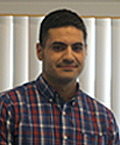 Ibrahim T. Nassar, Ph.D. received his Ph. D degree in January 2013 and M.S. degree in 2010 at University of South Florida. He received the B.S. degree from Jordan University of Science and Technology, Irbid, Jordan in 2008. all in electrical engineering, Dr. Nassar is currently working at Ansys, Inc.
Ibrahim T. Nassar, Ph.D. received his Ph. D degree in January 2013 and M.S. degree in 2010 at University of South Florida. He received the B.S. degree from Jordan University of Science and Technology, Irbid, Jordan in 2008. all in electrical engineering, Dr. Nassar is currently working at Ansys, Inc.
In 2009 he joined the WAMI research center as a graduate research assistant. His research is focused on design and development of small, 3-D passive wireless sensor nodes used for embedded and through-life structural health monitoring of civil infrastructures. For the intended application, the device should require very low externally provided power for activation to ensure sufficient range for wireless relay of sensed values. The approach that is used for providing such power is through radio frequency (RF) interrogation.
Dr. Nassar Dissertation was titled: "Long-Range, Passive Wireless Monitoring Using Energy-Efficient, Electrically-Small Sensor Nodes and Harmonic Radar Interrogator", focused developing novel reconfigurable phased antenna array systems based on radiating shape-shifting surfaces (RSSS) approach and metamaterial phase shifters. In order to lower cost and improve the antenna array tunability range, he is currently investigating different mechanisms to develop mechanically reconfigurable antennas. Using a Hoberman's planar foldable linkage, in which rotation in the ?-direction provides translation in the radial direction, a radiating shape-shifting surface (RSSS) has been developed. The antenna incorporates parasitic patches, which are repositioned over a fixed circular microstrip patch antenna.
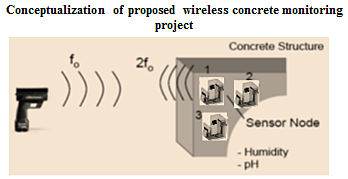
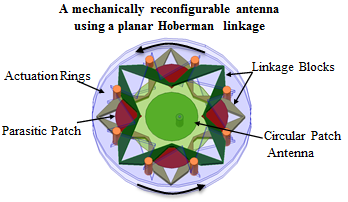
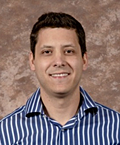 David Cure, Ph.D. received his Ph.D degree in Electrical Engineering in January 2013, and M.S in Electrical Engineering in 2006 at University of South Florida, his B.S.in Electronic Engineering department in 2001 at University of Norte, Barranquilla, Colombia, and M.S in Mobile Communications in 2002 at Polytechnic University of Madrid, Madrid, Spain. In 2007 he worked as a contractor for Chevroil at Tengiz, Kazakhstan. In 2008 he worked at Triquint Semiconductors. . Of his most notable achievements, he received the Latino Successful award 2011 at USF, HENACC poster competition awards 2010 and 2011 and Honorary mention paper recipient at Antennas and Propagation Conference 2011 and 2012. He is the recipient of a prestigious fellowship from the 2010 NASA Graduate Student Researchers Program (GSRP), Dr. Cure is currently working at Kymeta.
David Cure, Ph.D. received his Ph.D degree in Electrical Engineering in January 2013, and M.S in Electrical Engineering in 2006 at University of South Florida, his B.S.in Electronic Engineering department in 2001 at University of Norte, Barranquilla, Colombia, and M.S in Mobile Communications in 2002 at Polytechnic University of Madrid, Madrid, Spain. In 2007 he worked as a contractor for Chevroil at Tengiz, Kazakhstan. In 2008 he worked at Triquint Semiconductors. . Of his most notable achievements, he received the Latino Successful award 2011 at USF, HENACC poster competition awards 2010 and 2011 and Honorary mention paper recipient at Antennas and Propagation Conference 2011 and 2012. He is the recipient of a prestigious fellowship from the 2010 NASA Graduate Student Researchers Program (GSRP), Dr. Cure is currently working at Kymeta.
Dr. Cure dissertation was titled : "Reconfigurable Low Profile Antennas Using Tunable High Impedance Surfaces", where he was conducting research in "Low Profile Flexible Reconfigurable Ferroelectric-Based Antennas for Biomedical Applications". This type of antennas are ultra-thin, immune to external radio frequency interference and allows adjustment in response to adverse environmental loading making this design amenable to biomedical radiometric sensing applications. His research interests are electromagnetism structures for antennas, development and application of microwave materials and integrated circuit design. Among his personal interests Mr.Cure, enjoys studying and reading Mithology, Art and science.
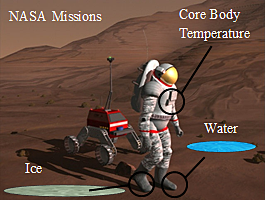
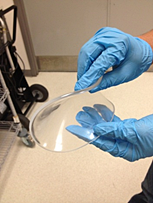
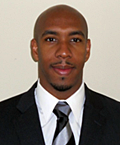
Tony Price, Ph.D. earned his Ph.D Degree in Electrical Engineering in January 2012 and his M.S. in 2006 from University of South Florida, and his B.S. in Electrical Engineering as well from Clark Atlanta University in 2004. He began working with the Wireless and Microwave Research group in 2006 after receiving his M.S. from USF. As a Ph.D. candidate in the Electrical Engineering Department at USF He was working in conjunction with the Center of Nano-scale Materials User Facility at Argonne National Laboratory. His research was involved in the application of ferroelectric thin films to fabricate and model tunable RF devices. Tony was a recipient of the National Science Foundation Graduate Research Fellowship and the McKnight Doctoral Fellowship, Dr. Price is currently working at Qorvo.
His Ph.D Disertation was titled: "Nonlinear Properties of Nanoscale Barium Strontium Titanate Microwave Varactors", Barium strontium titanate (BST) is a ferroelectric material with a relative permittivity that changes with respect to an externally applied electric field. Due to this characteristic along with the increase in demand of flexible RF/MW components, BST thin films have been widely investigated for the application of tunable varactors, phase shifters, and filters. For this project, we are aiming to derive a model that will accurately predict the nonlinearity of BST varactors based on the material properties of the film. Planar varactors will be fabricated using BST films with varied crystal sizes and interplanar spacing. The nonlinearity of the devices will be enhanced by creating nano-scale gaps between the electrodes using electron beam lithography. The nonlinear properties will be observed by performing two tone measurements using a low noise floor test bench. The nonlinear model will later be used for the design of tunable filters and antennas.
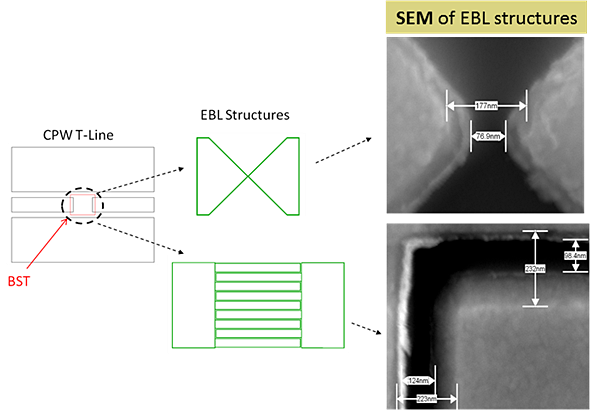
Figure 1: Nanoscale BST Varactors
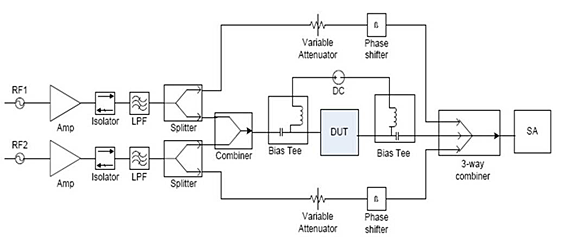
Figure 2: Two-Tone Test Bench Diagram
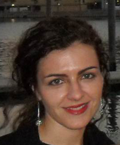
Bojana Zivanovic, Ph.D. received her Ph.D Degre in electrical engineering in January 2012. She received a MS in electrical engineering with concentration in microelectronics in 2005 from the University of South Florida. She conducted research in nanotechnology and material science, that was geared toward producing carbon nanotubes (CNT) based device using multi-step E-beam lithography. She graduated in 2003 with B.S. in Physics from St. John Fisher College in Rochester, NY. Bojana was born in Belgrade, Serbia, Dr. Zivanovic is currently working at Waveconnex.
Dr. Zivanovic dissertation was titled: "Series-Fed Aperture-Coupled Micostrip Antennas and Arrays", focused on developing and circuit modeling of series-fed planar linear and circularly polarized microstrip slot-coupled antennas and arrays in C-band for omni-directional radiation. These arrays were designed to be used as part of airborne or land-based frequency-hopped communication systems. One of the main objectives of the project was to maintain a constant beam angle over the frequency band of operation. In order to achieve constant beam pointing versus frequency, series-fed approach using lumped-element circuit models was developed to balance the power radiated by each element in N-element arrays. Omni-directional radiation was achieved by assembling six N-element arrays in a hexagonal manner.
Circular polarization and wide CP bandwidth was achieved with only single feed in Z-slot –coupled microstrip antenna. Previously, Bojana also worked on multilayer air cavity patch antennas in ISM-band and C-band patch antenna with superstrate as part of the research performed to find the optimum antenna topology to be used for wireless sensor nodes within the aircraft and on designing a diversity antenna test board for measurements of different multipath and channel fading environments inside of compact reconfigurable channel emulator (CRCE).
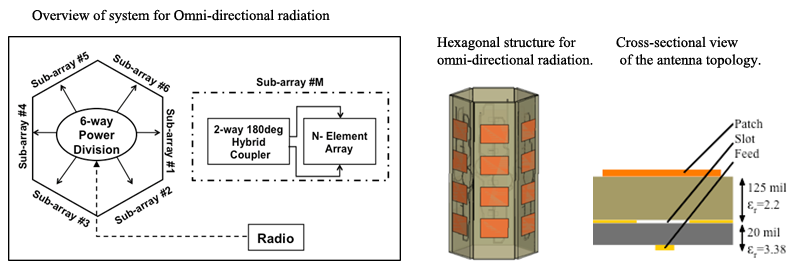
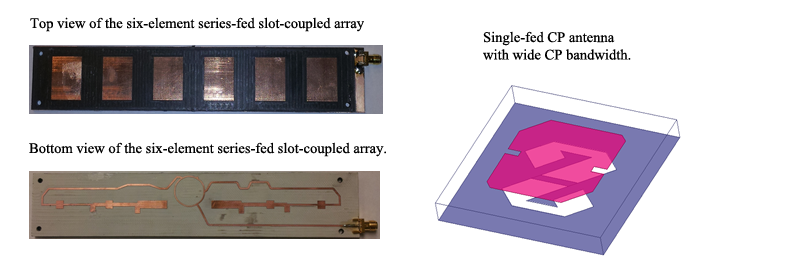
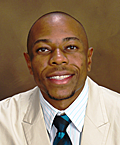 Quenton Bonds, Ph.D. earned his B.S. degree in Mathematics from Alabama State University in 2001, his M.S. degree in Electrical Engineering from the University of South Florida (USF) in 2006, and in 2010 he recieved his Ph.D. in Electrical Engineering from USF. Of his most notable achievements, Dr. Bonds dissertation was titled: "A Microwave Radiometer for Close Proximity Core Body Temperature Monitoring: Design, Development, and Experimentations", and is currnently working at NASA, Dr. Bonds was the recipient of :
Quenton Bonds, Ph.D. earned his B.S. degree in Mathematics from Alabama State University in 2001, his M.S. degree in Electrical Engineering from the University of South Florida (USF) in 2006, and in 2010 he recieved his Ph.D. in Electrical Engineering from USF. Of his most notable achievements, Dr. Bonds dissertation was titled: "A Microwave Radiometer for Close Proximity Core Body Temperature Monitoring: Design, Development, and Experimentations", and is currnently working at NASA, Dr. Bonds was the recipient of :
- Florida Education Fund Carl Crawford Award, 2010
- IEEE WAMICONN Best Student Poster Award, Fall 2010
- NASA Graduate Student Research Program (GSRP), Fall 2009-Summer 2010
- IEEE MTTS Fellowship for Medical Applications, Fall 2009-Summer 2010
- NASA Harriet Jenkins Predoctoral Fellow, Spring 2006-Summer 2009
- McKnight Doctoral Fellowship (MDF), Fall 2006 – Summer 2009
- USF College of Engineering Research Symposium Poster Award 1st Place, Fall 2008
- AAAS Conference Travel Award, Spring 2006
- Minority Graduate Fellowship, University of South Florida, Fall 2004 to Spring 2005
- NSF GK-12 Graduate Fellowship, Mini-Circuits Graduate Fellowship Fall 2005 (declined)
Non-Invasive Biomedical Sensing via Microwave Radiometry:
This work involves the research and development of a close proximity (1cm – 2 cm) microwave radiometer for extraction of subsurface biological data from the human body. In particular the first generation design is configured to detect subsurface core body temperature changes.
Subsequent contributions of this work include:
- The human core phantom, a three-layer model of tissue mimicking materials, developed to simulate the electrical properties of an abdominal cavity.
- A cavity backed slot antenna designed for optimal functionality in the near field of the human body.
- A non-contact model to account for certain artifacts, which arise due to near filed propagation effects.
- A non-coherent model, which emulates the propagation effects of the human body.
This work is supported by Raytheon and NSF. The student is currently funded by the Mcknight Doctoral Fellowship Program, and the NASA Graduate Student Research Program, 2010 (GSRP).
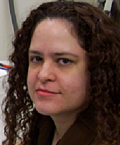
Evelyn Benabe is pursuing a Ph.D. degree in Electrical Engineering. In 2000, she received her M.S.E.E. from University of South Florida. Her research focused on the development of a substrate and frequency dependent model of air coil inductors and parasitic characterization of multi-layer ceramic capacitors using a coaxial cavity. She graduated with a bachelor's degree in electrical engineering from University of Puerto Rico at Mayagüez in 1995.
She is currently a Ph.D. candidate working in the fabrication, characterization and modeling of barium strontium titanate (BST) varactors. The main goal of her project is to measure the switching speed of BST based varactors. An opto-electronic system that relies on the use of an external electro-optic (EEO) probe to sample the electric field of the varactor is used to indirectly measure the transient response of the device. A model of the varactor and its surroundings is then used to extract the intrinsic switching speed of the film.

A study of the mechanical properties of the film will allow for its optimization for fast tuning applications such as phase shifters and microwave modulators. XRD and AFM are used to extract the interplanar spacing, crystal size, stress, and roughness of the films.
To increase the non-linear response of the varactors, series gap (SG) and interdigital (ID) varactors are fabricated using focused ion beam (FIB) techniques that allow gaps one order of magnitude smaller than conventional lithography techniques. These devices are expected to show higher tunability as a result of the nano-scale gap dimensions. The photos below show SG and ID varactors with gap in the sub-um regime fabricated using FIB techniques.
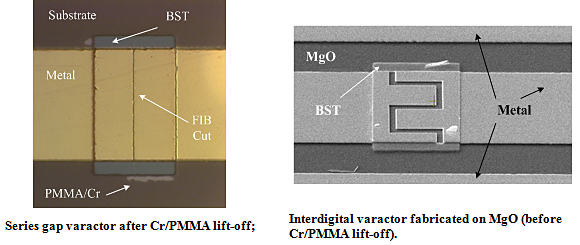
PAST MASTER Students
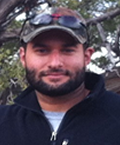 Yaniel Vega received his bachelor's degree in Electrical Engineering from USF in May of 2012 and his Master Degree in Electrical Enginering with major in RF and Microwave in May 2015. Before joining the Wami group in 2014 Yaniel worked for Space Machine and Engineering Co. a company that specializes in the manufacturing of high quality waveguides. He is now working at Lockheed Martin
Yaniel Vega received his bachelor's degree in Electrical Engineering from USF in May of 2012 and his Master Degree in Electrical Enginering with major in RF and Microwave in May 2015. Before joining the Wami group in 2014 Yaniel worked for Space Machine and Engineering Co. a company that specializes in the manufacturing of high quality waveguides. He is now working at Lockheed Martin
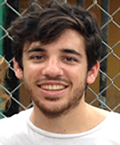 Nicholas C. Arnal received his bachelor's degree in Electrical Engineering from USF in May of 2014 and his Master Degree in Electrical Enginering with major in RF and Microwave in May 2015. As an undergraduate, he was involved in the Bulls Engineering Success Training (BEST) Program. For this program, he was on a multidisciplinary team tasked with designing an RF test fixture for elastomeric interconnects sponsored by Harris Corporation. In addition, he graduated with the highest honors and received the Outstanding Senior in Electrical Engineering Award and the King O'Neal Scholar Award (4.0 GPA).
Nicholas C. Arnal received his bachelor's degree in Electrical Engineering from USF in May of 2014 and his Master Degree in Electrical Enginering with major in RF and Microwave in May 2015. As an undergraduate, he was involved in the Bulls Engineering Success Training (BEST) Program. For this program, he was on a multidisciplinary team tasked with designing an RF test fixture for elastomeric interconnects sponsored by Harris Corporation. In addition, he graduated with the highest honors and received the Outstanding Senior in Electrical Engineering Award and the King O'Neal Scholar Award (4.0 GPA).
He is now working at Lockheed Martin.
PAST Undergraduate Students
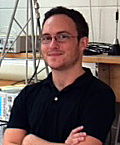
Bryce Hotalen has worked in the WAMI lab since January 2010 as an undergraduate research student. He is currently pursuing a B.S. in electrical engineering with a minor in mathematics. His current research focus is the development of a high bandwidth, omni-directional microstrip patch antenna array for use on an Autonomous Underwater Vehicle (AUV). In the past he was involved in a research project investigating different methods of multi-path mitigation. His future plans are to attend graduate school continuing a focus on applied electromagnetics for use in quantum information systems.
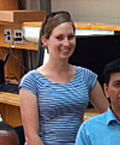
Stephanie Kiley is an undergraduate student at the University of South Florida and began working as a research student in February 2012. She is currently pursuing a B.S. in electrical engineering with a minor in computer science. Her current research focus is the development of an autonomous power control system for the microstrip patch antenna array of the AUV. Stephanie's future plans include starting a career in applied electromagnetics and eventually attending graduate school.
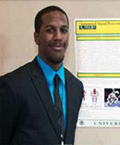
Robert Donatto joins Foldable Electronics as a key member in the research, development and decision making of the company. Originally from the Tampa Bay area he graduated high school in 2008 and is currently continuing his education as an undergraduate electrical engineering student at the University of South Florida. He is also actively involved in IEEE and the National Society of Black Engineers, where he holds an officer position at the University of South Florida chapter. His current professional goals are to receive his bachelor's of science degree in electrical engineering and pass his fundamentals of engineering exam (FE) in October 2012. After he completes college, he would either like to attend graduate school and continue research with RF applications, or work with a company that deals with similar qualities in some way. Since he is a Department of Homeland Security Scholar, he is required to invest at least one year to a DHS related career. He hopes to stay motivated throughout his academic career and receive his professional engineering license and hopefully his PhD in the future.
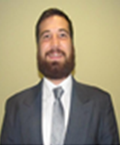
Federico Diamante also takes on the role of research, development and decision making at Foldable Electronics. He was born in Venezuela and immigrated to the United States in 2004. He is currently pursuing his bachelor's degree in electrical engineering at the University of South Florida. He is involved in several student organizations such as the University of South Florida IEEE student chapter, where he acts as a liaison between the Florida West Coast section of IEEE and the student chapter.
Foldable Electronics
Foldable Electronics is a student managed company, focused on research and development. The company is operated by students with the support of key members of the electrical engineering faculty at the University of South Florida. The main goal of the company is to develop innovative circuitry design on unconventional substrates.
Foldable Electronics was created in the spring of 2012 by Robert Donatto and Federico Diamante, with the intellectual help of Professor Tom Weller, a faculty member at the University of South Florida. The focus will be research and development of new approaches to circuitry design. Both Robert and Federico are electrical engineering students at University of South Florida and are interested in developing new technologies to satisfy the needs of the always growing electronics industry.

Elisha Stevenson takes on the function of software development with Foldable Electronics. She is currently working toward a bachelor's degree in computer engineering at the University of South Florida. In the past she has been involved with St. Petersburg College's local Florida Engineering Society chapter, where she held the position of project coordinator.
Yohannes Samuel: a senior in Electrical Engineering at the University of South Florida. My passion for this field stems from my work/experience in the U.S. Military, serving as a Radio Operator in the Marine Corps. A more in depth theoretical path was desired as a result, 05/2009 I joined the Research Experience for Undergraduate's (REU). Previous research involves experimental characterization of wireless communication channels using USF's laboratory-built Compact Reconfigurable Channel Emulator (CRCE). This is a bench-top instrument that is computer controlled with automated vector network analyzer measurements of antenna-to-antenna propagation within a compact reverberation chamber. Data collected from the testing of omni-directional and directional antennas are being investigated through statistical analysis for a stronger understanding of multi-path fading scenarios. Current research, involves the design and demonstration of a 2.45 GHz (ISM band) omni-directional antenna array. In the first phase of this project I will design, simulate and fabricate a single array. Design will use ADS (Momentum) software, the WAMI lab milling machine will be used to fabricate and then testing will be done in the anechoic chamber.

